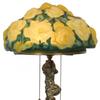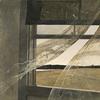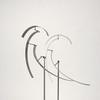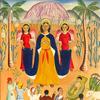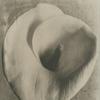Maven of Modernism: Galka Scheyer in California
- PASADENA, California
- /
- March 30, 2017
From April 7 to Sept. 25, 2017, the Norton Simon Museum presents Maven of Modernism: Galka Scheyer in California, an exhibition that delves into the life of Galka Scheyer, the enterprising dealer responsible for the art phenomenon the “Blue Four”—Lyonel Feininger, Alexei Jawlensky, Paul Klee and Vasily Kandinsky. In California, through the troubling decades of the Great Depression and the Second World War, German-born Scheyer (1889–1945) single-handedly cultivated a taste for their brand of European modernism by arranging exhibitions, lectures and publications on their work, and negotiating sales on their behalf. Maven of Modernism presents exceptional examples from Scheyer’s personal collection by the Blue Four artists, as well as works by artists including Alexander Archipenko, László Moholy-Nagy, Pablo Picasso and Diego Rivera, which was given to the Pasadena Art Institute in the early 1950s. All together, these works and related ephemera tell the fascinating story of this trailblazing impresario, who helped shape California’s reputation as a burgeoning center for modern art.
Galka Scheyer was born Emilie Esther Scheyer in Braunschweig, Germany, in 1889, to a middle-class Jewish family. As a young woman, she studied piano and painting, but it was in 1915, when she first saw paintings by Jawlensky (whom she met shortly thereafter) in an exhibition in Switzerland, that her life took a new direction, that of an ardent art supporter and promoter. (Indeed, it was Jawlensky who nicknamed Scheyer “Galka,” the Russian word for jackdaw, a gregarious, intelligent crow.) In the years that followed, Scheyer became closely associated with Jawlensky and the artists Feininger, Klee and Kandinsky, whom she named the “Blue Four” as she set out to promote their work in the United States in 1924. Scheyer found fertile ground for her mission when, in 1925, she moved to California and discovered an enthusiastic audience for her innovative artists and her activities as their representative.
In San Francisco, she quickly gathered important friends around her, including William H. Clapp of the Oakland Art Museum, Imogen Cunningham, Edward Weston, Frida Kahlo and Rivera. Moving to Los Angeles in 1930 enlarged the social and cultural network in which she circulated, connecting her to John Cage, Walter and Louise Arensberg, Josef von Sternberg, Peter Krasnow and a host of German émigré artists. Her Hollywood home, designed by Richard Neutra, functioned as a meeting place and gallery for a cadre of art aficionados.
Each object in the exhibition relates to Scheyer in a personal and meaningful way. From the Blue Four artists, for example, the exhibition presents the rarely seen Jawlensky painting “The Hunchback,” given by the artist to Scheyer in 1917 and based on the same work that she dearly admired when she visited the 1915 “Exhibition of Contemporary Russian Artists,” in Lausanne, Switzerland. Kandinsky’s “Heavy Circles,” 1927, one of the most recognizable works in the Museum’s Blue Four holdings, was given to Scheyer by the artist as a gesture of friendship. Klee’s “Possibilities at Sea,” 1932, another standout in the Museum’s collection, was so beloved to Scheyer that she negotiated its purchase from Klee, writing “It is one of the most amazing pictures I have ever experienced.” And Feininger’s “Untitled,” 1945, was sent to Scheyer after he learned of her diagnosis of cancer, along with a letter stating “It is enough to make one want to shed tears, when we think of you suffering, with your deep love for Art the only thing that keeps your chin up….”
While Scheyer is well known for her support of the Blue Four artists, lesser known is that she built an impressive collection of works by other leading contemporary artists, developed out of her friendships and many social encounters. Highlights in the exhibition include Rivera’s “Blue Boy with the Banana,” 1931, which was acquired by Scheyer during her stay with Rivera and Kahlo in Mexico City in the early 1930s. Weston’s “Two Shells,” 1927, was given to Scheyer as a gift from the artist in 1927, not long after the two met at a party given by his neighbor, Peter Krasnow. Krasnow’s illustrative watercolor “Recalling Happy Memories,” c. 1927, also gifted to Scheyer by the artist, depicts Scheyer lecturing to a small gathering, holding a painting in her left hand and a pointer in her right, with the four blue lines, recognized as symbols of the Blue Four artists, painted in the upper right-hand corner.
Maven of Modernism is organized by Curator Gloria Williams Sander.

